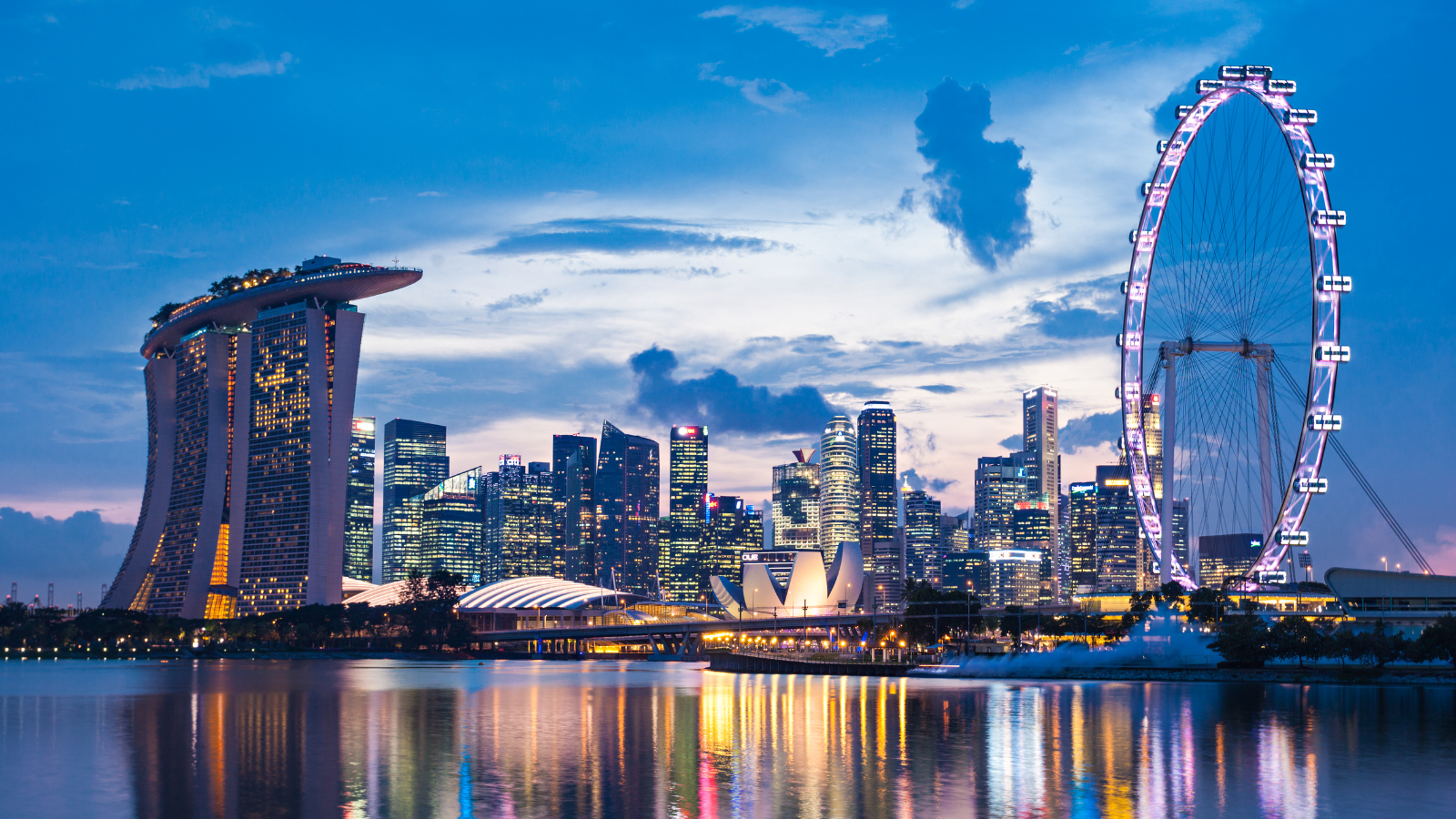
Your Ultimate Guide to Experiencing the Best of Singapore for Indian Families
Singapore, a city-state known for its blend of modern attractions, cultural diversity, and family-friendly activities, offers an unforgettable experience for Indian families. Whether you're marveling at its stunning skyline, exploring world-class attractions, or sampling diverse cuisines, Singapore provides a safe and exciting environment that caters to all ages. This guide from Trawelmart will cover everything you need to know for a memorable family trip, including tips on where to go, what to eat, and how to make the most of your time in Singapore.
Best Time to Visit:
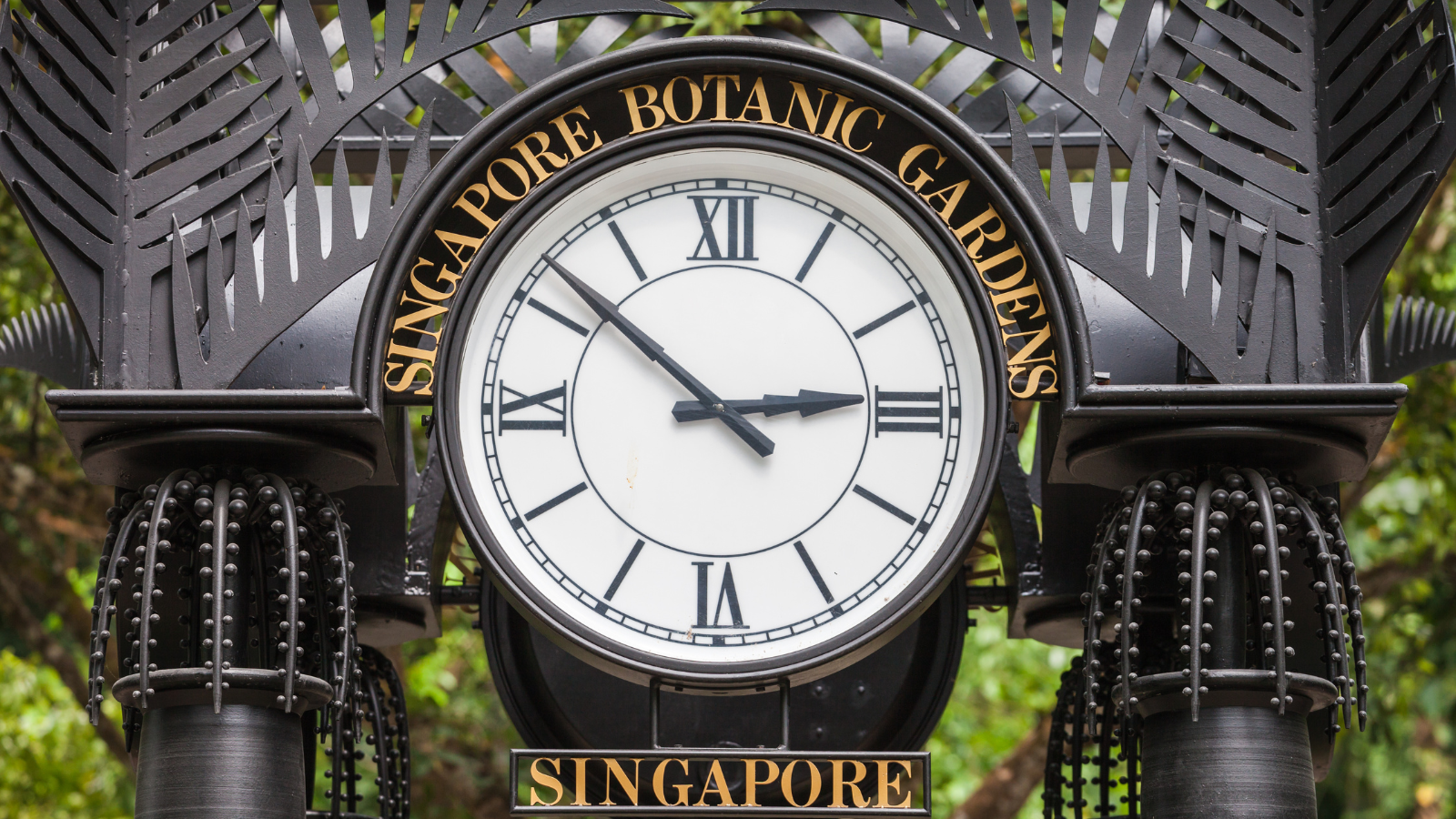
1. Dry Season: February to April
- Weather: This period generally experiences the least rainfall and lower humidity levels, making it ideal for outdoor sightseeing, beach trips, and exploring.
- Best Activities: You can enjoy walks around Marina Bay Sands, Sentosa Island, or Gardens by the Bay. With clearer skies, you’ll also have better views from the Singapore Flyer and rooftop pools.
- Pros: Pleasant weather and fewer rainy days.
2. Peak Season: June and December
- Weather: Expect moderate rainfall, but warm and sunny days are still common.
- Events:
- Great Singapore Sale (June–August): A major shopping festival with discounts across the city.
- Christmas and New Year Celebrations (December): Orchard Road and other areas are decorated with festive lights and displays, perfect for a vibrant experience.
- Pros: If you enjoy bustling events and shopping deals, these months are ideal. The city comes alive with lights and events.
- Cons: This period attracts more tourists, so attractions can be crowded, and accommodation prices may be higher.
3. Rainy Season: November to January
- Weather: Rain is more frequent during this period, with November seeing the start of the monsoon season. Showers are usually short but intense.
- Best Activities: Indoor attractions like the National Gallery, Marina Bay Sands SkyPark, and Universal Studios are great options.
- Pros: Lush green landscapes due to frequent rains; fewer tourists.
- Cons: Frequent rains may disrupt outdoor plans, though the showers are typically brief.
4. Shoulder Seasons: May and September to October
- Weather: These are transition months with moderate rain, slightly less crowded attractions, and generally pleasant weather.
- Events: May features Vesak Day celebrations, while September is marked by the Mid-Autumn Festival and the Formula 1 Singapore Grand Prix.
- Pros: Quieter travel experience, good weather, and some local cultural events to enjoy.
Summary:
- For Ideal Weather: February to April
- For Festivals and Shopping: June and December
- For a Quieter Experience: May, September, and October
Weather Overview:
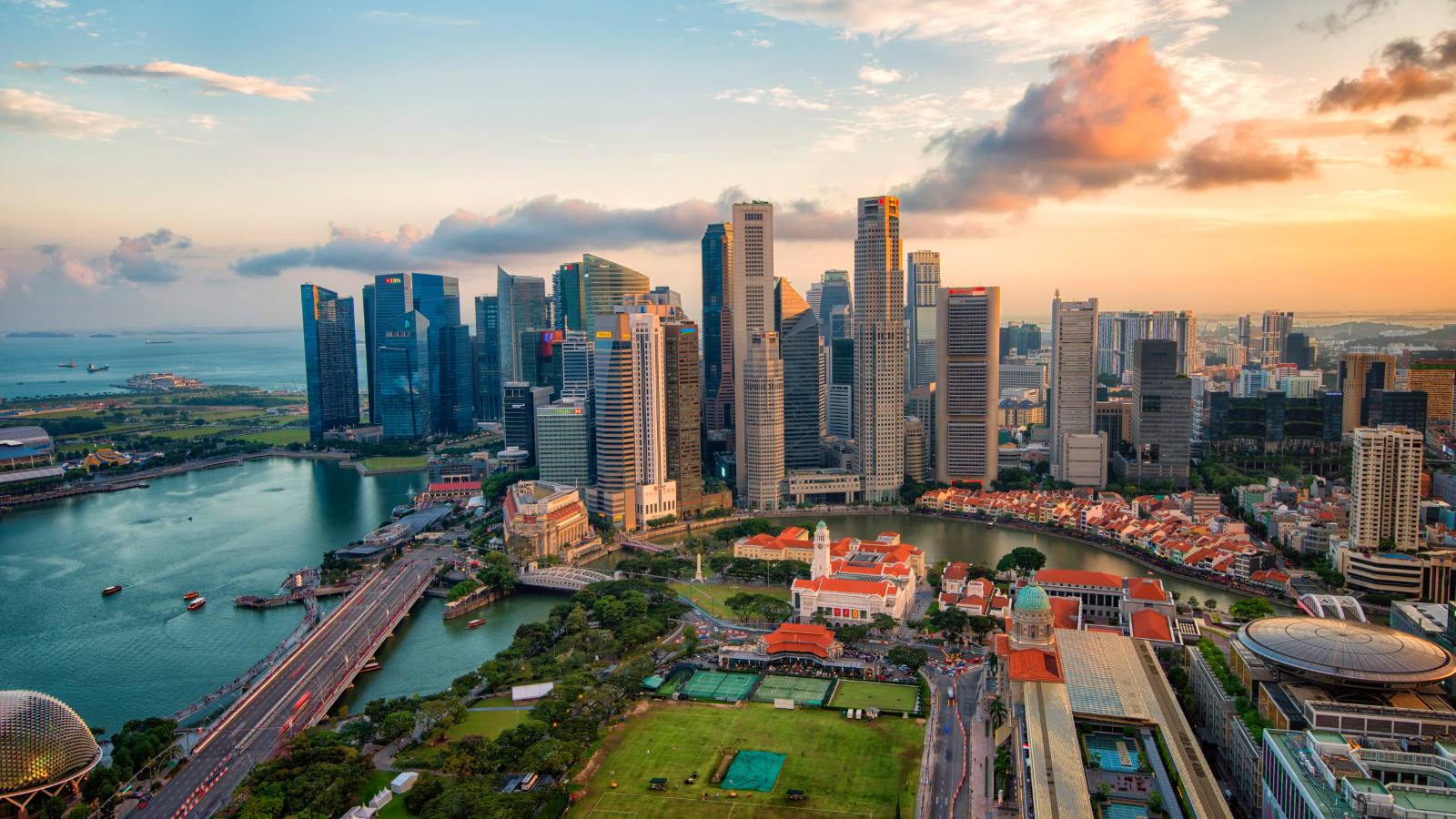
Singapore experiences a tropical rainforest climate characterized by consistent temperatures, high humidity, and substantial rainfall throughout the year. The city-state's proximity to the equator results in minimal temperature variation, with averages ranging from 24°C (75°F) to 32°C (90°F). Humidity levels typically hover between 70% and 90%, contributing to a consistently warm and moist environment.
Rainfall is abundant, averaging approximately 2,340 mm (92 inches) annually. The Northeast Monsoon season, occurring from November to early March, brings increased rainfall, particularly between November and January, which are among the wettest months. During this period, prolonged and heavy rain spells are common, often lasting from one to three days. Conversely, the Southwest Monsoon season, from June to September, features isolated to scattered showers, especially in the late morning and early afternoon. This season is also known for "Sumatra squalls," which are early morning thunderstorms accompanied by strong winds.
Despite the high humidity and frequent rainfall, Singapore receives a moderate amount of sunshine, averaging about 5 to 6 hours per day. February is typically the sunniest month, while November and December are the least sunny due to increased cloud cover during the Northeast Monsoon.
The uniformity of Singapore's climate means that there are no distinct seasons, and weather patterns remain relatively consistent year-round. However, the monsoon periods do introduce variations in rainfall and wind patterns, influencing daily weather conditions.
For the most current and detailed weather forecasts, it is advisable to consult the Meteorological Service Singapore or other reliable weather forecasting services.
Here’s a structured table for the Weather Overview in Singapore:
| Month | Average Temperature (°C) | Rainfall (mm) | Humidity (%) | Season Characteristics |
|---|---|---|---|---|
| January | 25 - 30 | 238 | 84 | Wet season with frequent showers, slightly cooler. |
| February | 25 - 31 | 112 | 83 | Transition month, fewer rainy days, warm temperatures. |
| March | 26 - 31 | 170 | 83 | Beginning of dry season; still humid and warm. |
| April | 26 - 32 | 170 | 84 | Hot and humid with occasional rain showers. |
| May | 26 - 32 | 171 | 85 | Warm and humid; occasional afternoon thunderstorms. |
| June | 26 - 32 | 163 | 84 | Warm, humid, with less rainfall. |
| July | 26 - 32 | 150 | 83 | Drier period; warm and humid, slightly cooler evenings. |
| August | 26 - 32 | 148 | 83 | Dry season with occasional rain; warm temperatures. |
| September | 26 - 32 | 164 | 83 | Slightly more rainfall, warm and humid. |
| October | 26 - 31 | 191 | 84 | Transition to wet season, increased rain. |
| November | 25 - 30 | 255 | 85 | Heavy rain; start of monsoon season, cooler. |
| December | 25 - 30 | 288 | 86 | Wettest month, frequent showers and thunderstorms. |
Currency and Cash Guidelines:
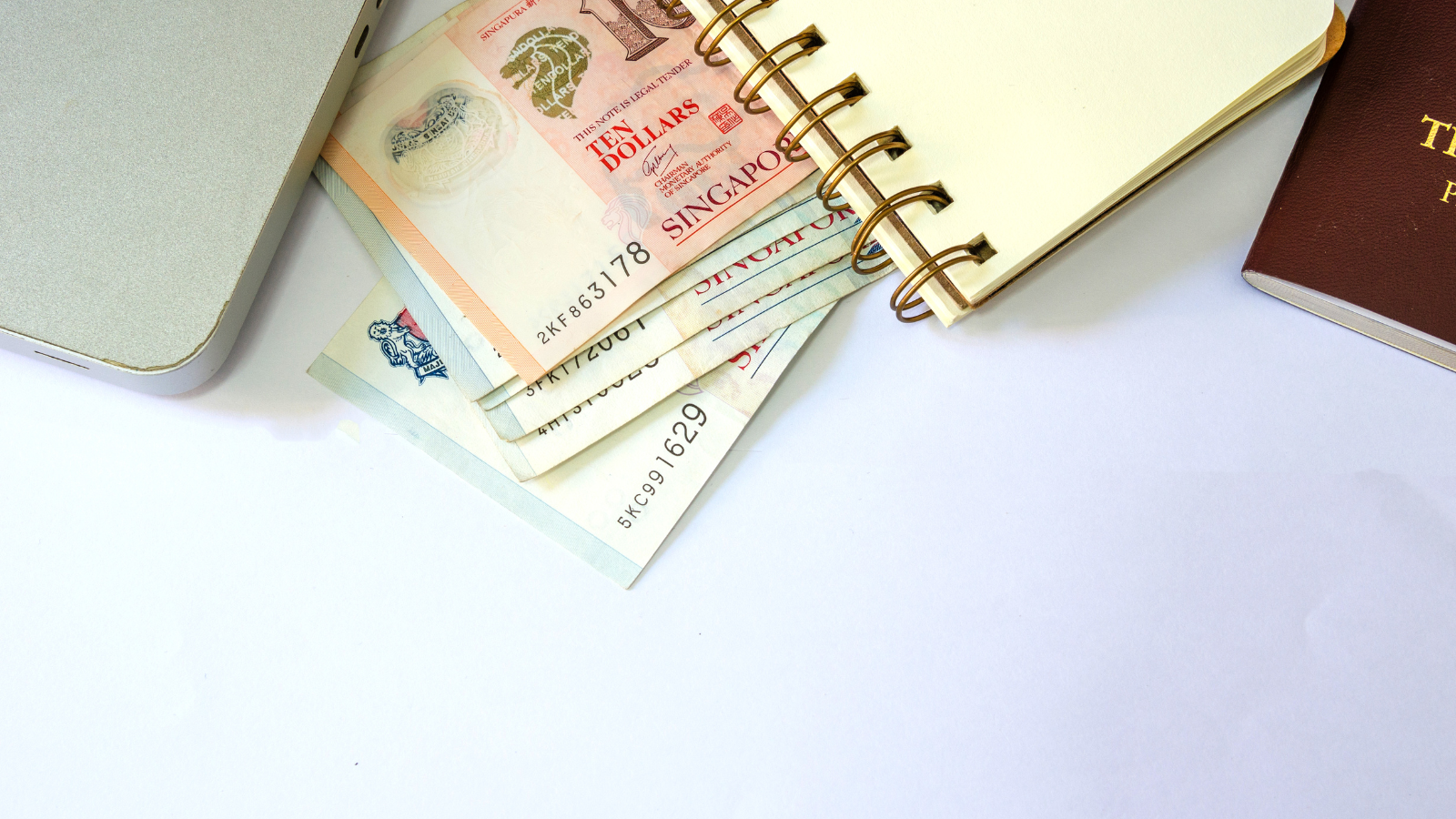
Here’s a comprehensive guide on currency and cash handling in Singapore, tailored specifically for Indian travelers
1. Currency in Singapore
- The official currency is the Singapore Dollar (SGD), symbolized as S$.
- Denominations: Banknotes come in S$2, S$5, S$10, S$50, S$100, S$1,000, and S$10,000, while coins are available in 5 cents, 10 cents, 20 cents, 50 cents, and S$1.
2. Exchange Rates and Currency Conversion
- Exchange rates fluctuate, but on average, 1 Singapore Dollar (SGD) is approximately 60 INR (check for up-to-date rates before your trip).
- Currency exchange is widely available at banks, money changers, and airports. However, money changers in Singapore’s Little India area typically offer better rates for Indian Rupees (INR).
- Always compare rates and fees between locations to get the best deal.
3. Where to Exchange Money
- Banks: Available in major shopping areas and business districts. Banks like DBS, UOB, and OCBC offer currency exchange services.
- Money Changers: Found in shopping malls, tourist districts, and areas like Little India, Chinatown, and Mustafa Centre. These money changers are usually open longer hours than banks and sometimes offer better rates.
- Airports: Money exchange is available at Changi Airport, though rates might be less favorable than city locations.
4. Using Credit and Debit Cards
- International credit and debit cards (Visa, Mastercard, American Express) are widely accepted in Singapore, especially in urban areas, malls, restaurants, and hotels.
- Notify your bank of your travel plans to avoid your card being blocked due to suspicious foreign transactions.
- Always verify if there’s an additional international transaction fee when using your card. Most banks charge 1-3% on foreign transactions.
5. Cashless Payments and Digital Wallets
- Contactless payments like Apple Pay, Google Pay, and Samsung Pay are commonly accepted.
- Singaporeans frequently use QR codes for payments via apps like PayNow and GrabPay, which also offer discounts at times. While you may not be able to use PayNow without a local bank account, GrabPay can be accessed by tourists.
- Ez-Link and NETS FlashPay cards: These stored-value cards can be used for public transport and at select retail stores, making them a convenient option for travelers. You can buy and top up these cards at MRT stations.
6. Carrying Cash
- Although Singapore is digital-friendly, it’s advisable to carry some cash, especially for smaller purchases, hawker centers, and taxis, where card payments may not be accepted.
- Daily Budget: For an average tourist, S$50 to S$100 per day in cash should be sufficient for basic needs and smaller expenses.
7. ATM Withdrawals
- ATMs are widely available, and international debit/credit cards work at most of them.
- Be mindful of international withdrawal fees from your home bank. Some ATMs also have a small local charge (typically S$3-5 per withdrawal).
- Popular banks with ATMs in Singapore include DBS, UOB, and OCBC.
8. Money Safety Tips
- Always keep your cash, cards, and other valuables secure in a travel-friendly wallet.
- Avoid carrying large sums of cash, especially when using public transport or visiting crowded places like Orchard Road or Chinatown.
- Use ATMs in well-lit areas and within banking hours if possible for added security.
9. Customs Rules on Carrying Cash
- Singapore requires declaration for carrying more than S$20,000 (or its equivalent in foreign currency) into or out of the country.
- If you are carrying a large amount, be prepared to declare it at immigration. For regular tourists, carrying smaller sums avoids the need for declaration.
10. Currency Tips for Indian Travelers
- Plan to carry a mix of payment options: a moderate amount in SGD cash, an international debit/credit card, and a loaded digital wallet for cashless payments.
- Check with your bank for any currency cards that offer favorable exchange rates and ease of use abroad.
- Mustafa Centre in Little India is known for its good rates and 24-hour services, making it a convenient place for currency exchange anytime during your trip.
11. Currency Exchange Tips
- It’s generally better to exchange currency in Singapore than in India due to better rates.
- Avoid exchanging large amounts at the airport; use city-based exchanges in areas like Chinatown or Orchard Road for the best rates.
- Keep receipts of any currency exchanges or ATM withdrawals in case you need them for verification or refund purposes.
Travel Tips for Indian Tourists:

1. Visa Requirements- Indian tourists need a visa to visit Singapore. The process is relatively straightforward and can be done through an authorized agent.
- Ensure your passport is valid for at least six months beyond your travel dates.
- Apply at least a few weeks in advance to avoid last-minute rushes.
2. Currency and Payments
- The currency used in Singapore is the Singapore Dollar (SGD). It's advisable to exchange some money in India before traveling.
- Credit and debit cards are widely accepted, and you’ll find ATMs almost everywhere.
- Consider using an international travel card for better exchange rates and convenience.
3. Weather and Packing Essentials
- Singapore has a tropical climate, meaning it’s generally hot and humid year-round. Light, breathable clothing is recommended.
- Don’t forget an umbrella or raincoat, as rain showers can occur unexpectedly.
- Carry sunscreen, a hat, and comfortable walking shoes to explore the city with ease.
4. Cultural Etiquette
- Singapore is a multicultural country, and respecting local customs is essential.
- Dress modestly, especially when visiting religious sites. Cover shoulders and knees.
- Avoid touching anyone’s head, as it is considered disrespectful, and refrain from pointing fingers.
5. Food and Dining Etiquette
- Singapore is a food haven, offering dishes from different cultures. For Indian vegetarians, look for “Veg” or “Vegetarian” signs at hawker centers.
- Tap water is safe to drink in Singapore, so you don’t need to worry about bottled water everywhere.
- Hawker centers are popular and affordable places for meals. They are clean and regulated by the government, so feel free to explore.
6. Public Transport
- Singapore’s public transport system (MRT, buses, and taxis) is efficient and affordable.
- Consider getting an EZ-Link card or Singapore Tourist Pass for unlimited rides on public transportation.
- Download public transport apps like MyTransport Singapore or Google Maps to help navigate.
7. Language and Communication
- English is one of Singapore’s official languages, and signs are mostly in English, so communication won’t be challenging.
- You can also hear Tamil, Mandarin, and Malay spoken widely, making it easier for Indian tourists to connect with locals
8. Health and Safety
- Singapore is one of the safest countries in the world. However, always stay alert to avoid pickpocketing.
- No vaccinations are required to enter Singapore, but having travel insurance for medical emergencies is advisable.
9. Respect Local Laws and Regulations
- Singapore is known for its strict laws. Avoid chewing gum in public, as it’s restricted. Drug offenses are dealt with severely.
- Jaywalking, littering, and smoking in public places are also illegal and carry hefty fines.
10. Emergency Contact Numbers
- Familiarize yourself with emergency numbers: 999 for the police, 995 for ambulances, and 1777 for non-emergency ambulances.
- Download local emergency apps, like SGSecure, for real-time updates on safety and emergency services.
Culture:
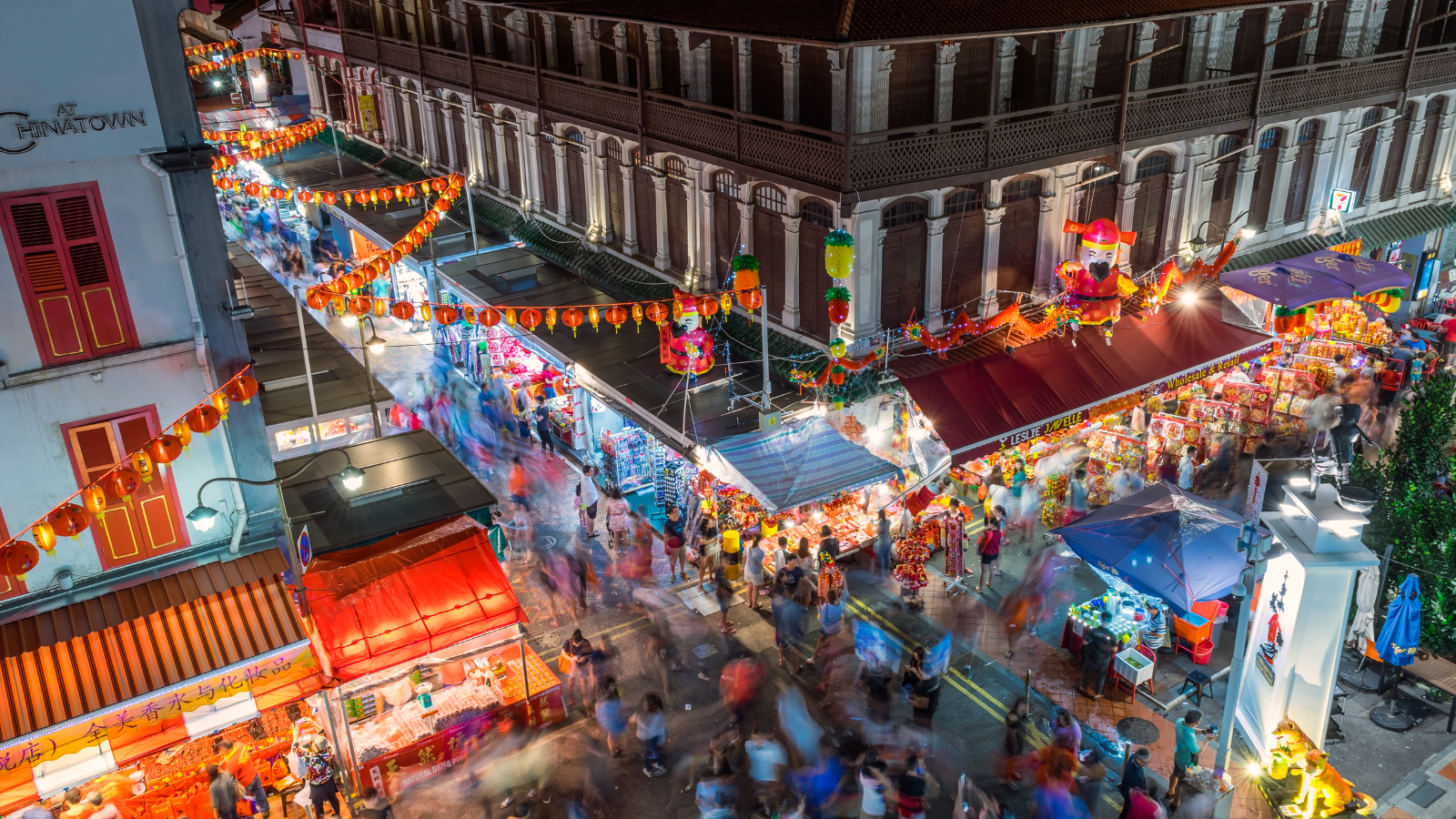
Singapore is a melting pot of diverse cultures and traditions, making it one of the most unique destinations in Asia. This vibrant cultural tapestry is woven from Chinese, Malay, Indian, and Eurasian influences, resulting in a harmonious and respectful society. Celebrations of multiple cultural and religious festivals, such as Chinese New Year, Deepavali, Hari Raya Puasa, and Christmas, showcase Singapore’s commitment to multiculturalism and inclusivity.
Visitors can explore different cultural neighborhoods like Chinatown, Little India, and Kampong Glam, each reflecting its heritage through architecture, festivals, and cuisine. In Chinatown, temples like the Buddha Tooth Relic Temple and Thian Hock Keng Temple exemplify traditional Chinese culture. Little India is a haven for Indian travelers, where vibrant textiles, aromatic spices, and colorful garlands bring a slice of India to Singapore. Kampong Glam’s Sultan Mosque and Arab Street offer glimpses of Malay-Muslim heritage and artsy alleys.
Family-friendly cultural venues like the Asian Civilisations Museum and National Museum of Singapore also offer interactive exhibits, allowing kids and adults alike to dive deeper into Singapore's cultural story.
Language:
While Singapore’s official languages include English, Mandarin, Malay, and Tamil, English is the primary language for government, business, and everyday interactions. This makes it incredibly easy for Indian families to navigate, as English proficiency is high across the population. For Indian tourists, Tamil is also widely recognized, with official signages, MRT announcements, and government materials often available in Tamil.
Singaporeans often speak in a local dialect known as Singlish—a blend of English with phrases from Malay, Mandarin, Tamil, and Hokkien. You might hear locals using Singlish expressions like “lah” and “leh” to add emphasis, creating a friendly and informal tone.
Experiencing Cuisine:
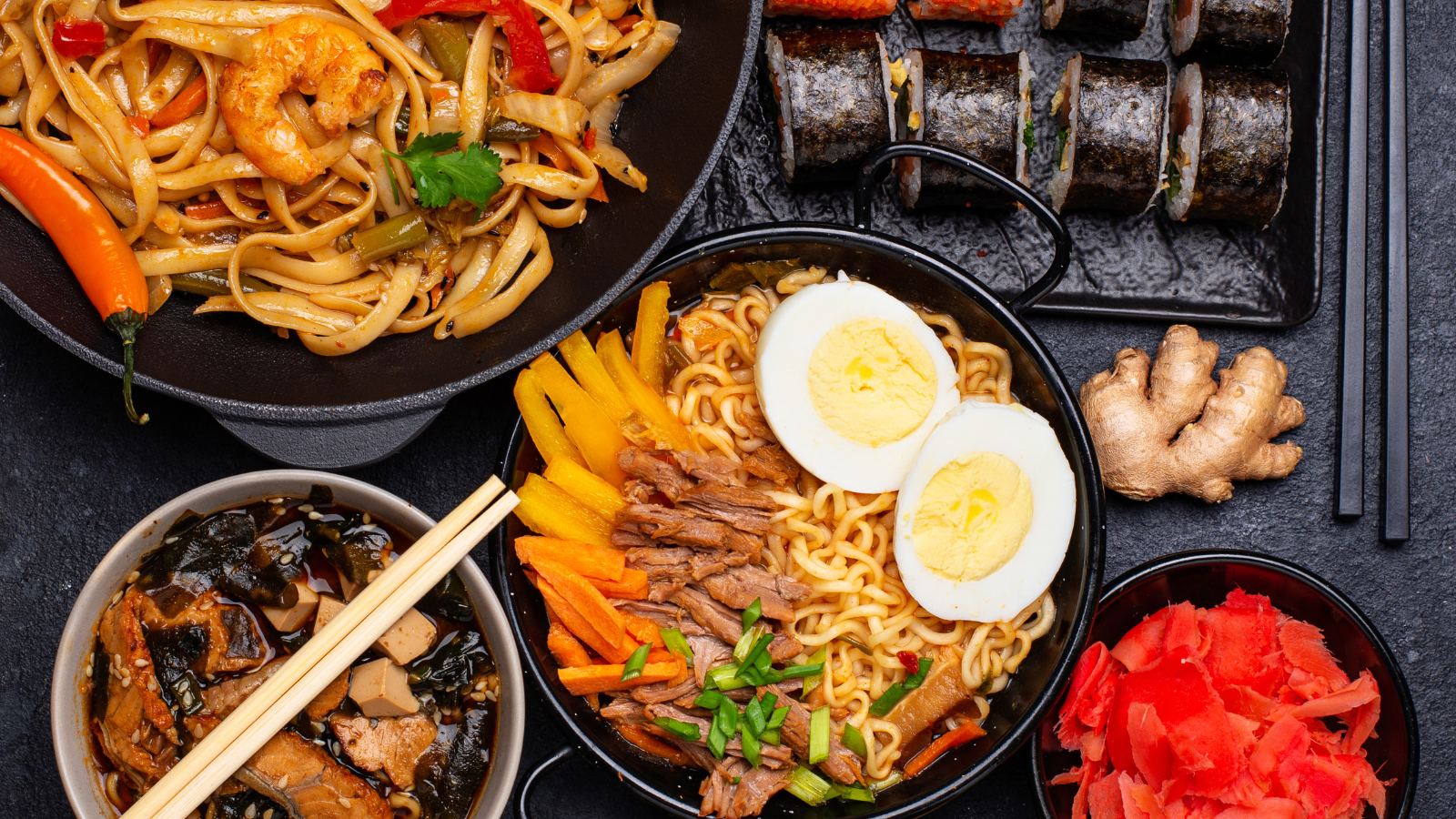
Singapore is world-renowned for its cuisine, blending flavors and culinary traditions from across Asia. Food lovers will find everything from local hawker centers to Michelin-starred restaurants. Indian families can enjoy a range of halal, vegetarian, and Indian cuisine options, making dining accessible for all preferences and dietary needs.
Must-try Singaporean dishes include:
- Hainanese Chicken Rice: Known as Singapore’s national dish, it features succulent poached chicken with fragrant rice, served with chili sauce and ginger paste.
- Laksa: A spicy noodle soup with coconut milk, prawns, and fish cakes, available in various versions.
- Satay: Skewered and grilled meats served with a savory peanut sauce, perfect for families who enjoy grilled treats.
- Chili Crab: This iconic dish combines sweet and savory chili sauce with fresh crab, making it a messy but delightful experience.
- Roti Prata and Nasi Lemak: For Indian families, these Malaysian-influenced dishes will be familiar. Roti Prata is similar to paratha, often enjoyed with curry, while Nasi Lemak includes fragrant rice with sides like eggs, peanuts, and anchovies.
For a complete culinary experience, hawker centers are a must-visit, offering a wide variety of local delicacies at affordable prices. Centers like Maxwell Food Centre, Lau Pa Sat, and Chinatown Complex Food Centre offer everything from noodles to vegetarian fare. Vegetarian and Indian cuisine are easily accessible in Little India and around the city, where you’ll find familiar North and South Indian dishes and some uniquely Singaporean twists on Indian cuisine.
Shopping and Shopping Tips:
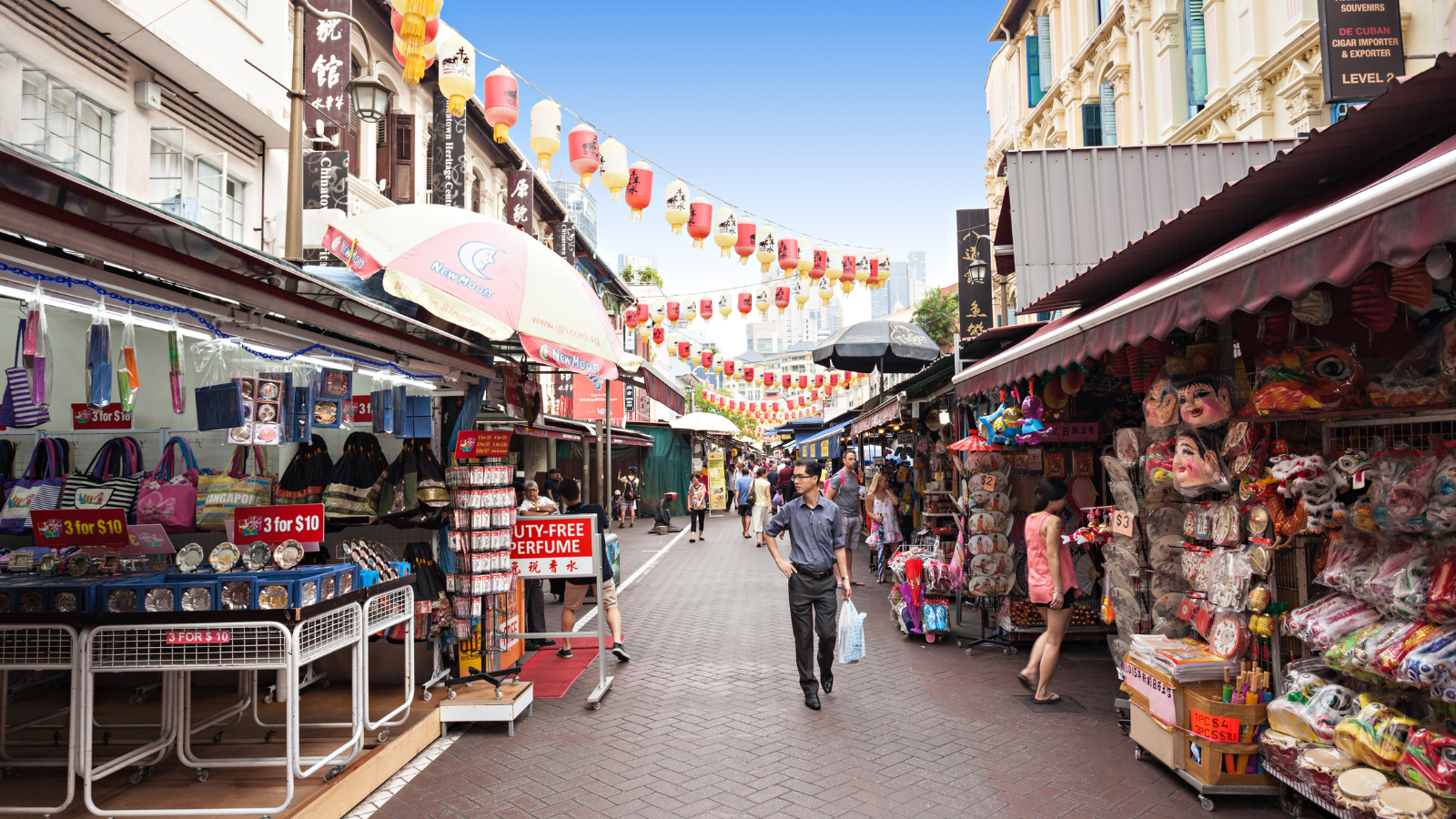
Singapore is a paradise for shopaholics, offering a variety of shopping experiences from luxury boutiques and global brands to local markets and hidden gems. Whether you’re after high-end fashion, unique souvenirs, or bargain finds, Singapore has something for everyone.
Top Shopping Destinations:
- Orchard Road: Singapore’s most famous shopping street, lined with malls like ION Orchard, Ngee Ann City, and Paragon. You’ll find everything from luxury brands to trendy boutiques.
- Marina Bay Sands Shoppes: Known for its luxury brands and architectural splendor, it’s perfect for an upscale shopping experience.
- Bugis Street Market: For those looking for affordable fashion, souvenirs, and local snacks, Bugis Street is ideal. It’s one of Singapore’s biggest and most bustling street markets.
- Chinatown: A hub for cultural shopping, offering traditional items, souvenirs, Chinese medicinal goods, and intricate artworks.
- Little India: Known for vibrant textiles, jewelry, and spices, Little India offers a glimpse into Singapore’s Indian heritage and a unique shopping experience.
- VivoCity: Singapore’s largest mall with an array of stores, entertainment options, and waterfront views – a favorite among families and locals alike.
- Haji Lane: For something different, Haji Lane in Kampong Glam is filled with indie boutiques, vintage stores, and quirky items perfect for unique finds.
Shopping Tips for Indian Tourists:
- Best Time for Shopping Deals: Singapore’s Great Singapore Sale (GSS), typically held in June-July, offers discounts across all stores. Chinese New Year and Christmas seasons also bring special sales.
- Currency and Payment: Singapore dollars (SGD) are widely accepted. International credit cards are accepted almost everywhere, and ATMs are easily accessible for cash withdrawals.
- Tax-Free Shopping: As a tourist, you can enjoy GST refunds on purchases above SGD 100 at participating stores. Just ask for the eTRS (electronic Tourist Refund Scheme) ticket and claim your refund at the airport.
- Bargain Hunting: While bargaining is not common in high-end stores or malls, you can try negotiating prices at markets like Bugis Street and Chinatown.
- Packing Essentials: Remember Singapore’s tropical climate – bring light clothing and a water bottle to stay hydrated. Wear comfortable shoes for long hours of shopping.
- Shopping Hours: Most malls open around 10 AM and close at 10 PM, but some stores in areas like Chinatown may close earlier.
Must-Buy Souvenirs from Singapore
- Orchid Perfumes: A unique floral scent representing Singapore’s national flower.
- Kaya Jam: A traditional coconut and egg spread, great for a taste of Singapore.
- Merlion Souvenirs: Items like keychains, magnets, and figurines featuring Singapore’s iconic symbol.
- Singapore Sling Mix: Bring home the mix for Singapore’s famous cocktail.
- Local Snacks and Spices: Get authentic flavors with Singaporean snacks like Bak Kwa (BBQ pork slices) or Singaporean curry powders.
Additional Tips
- Eco-Friendly Shopping: Singapore promotes eco-conscious practices, so carry reusable bags for your purchases.
- Duty-Free Allowances: For Indians, be mindful of the customs regulations on duty-free items when returning to India. Singapore Changi Airport also has a range of duty-free stores for last-minute shopping.
- Stay Connected: Use free Wi-Fi available in most shopping centers to stay connected and access mobile payment options or discounts via apps.
Ideal Trip Duration:
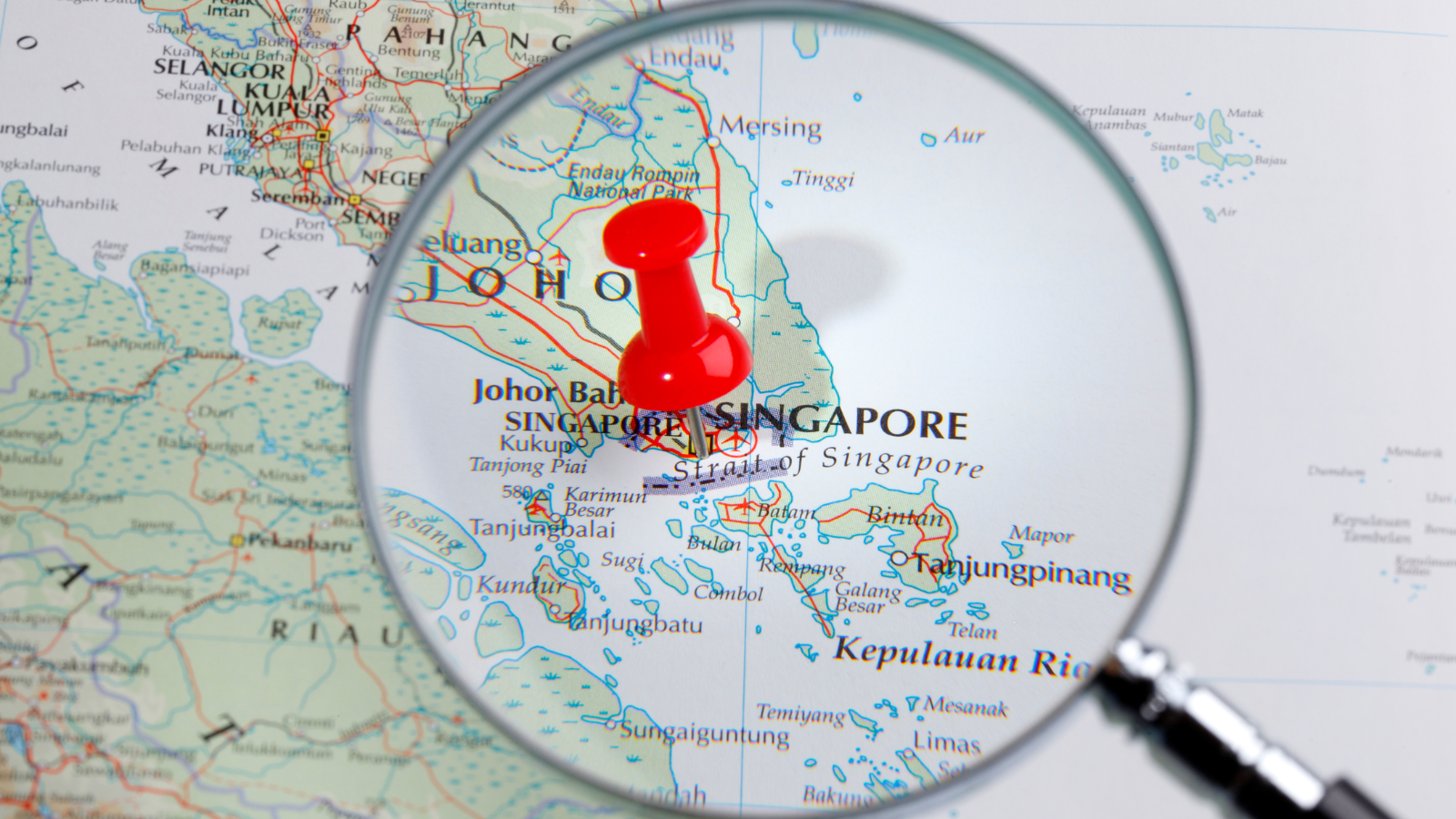
A week in Singapore (5-7 days) is ideal for Indian families to enjoy the main attractions, relax, and soak up the local culture without rushing.
Day 1: Arrival and Marina Bay Sands
Settle in and visit the iconic Marina Bay Sands. End the day with the Spectra light show.
Day 2: Gardens by the Bay and Singapore Flyer
Explore the Flower Dome and Cloud Forest at Gardens by the Bay, then take a ride on the Singapore Flyer for panoramic city views.
Day 3: Sentosa Island
Enjoy Sentosa Island’s beaches, Universal Studios, and the S.E.A. Aquarium.
Day 4: Chinatown and Little India
Visit Chinatown for temples and shopping, then head to Little India for familiar cuisine and vibrant markets.
Day 5: Singapore Zoo and Night Safari
Spend the day at Singapore Zoo and experience the Night Safari in the evening.
Day 6: Orchard Road and Shopping
Enjoy a shopping day at Orchard Road, and relax with a visit to Raffles Hotel for afternoon tea.
Day 7: Jurong Bird Park and Departure
Visit Jurong Bird Park in the morning before heading to the airport.
Top 15 Places to Visit:
Marina Bay Sands
Famous for its infinity pool, luxury hotel, and rooftop views.
- Gardens by the Bay
An award-winning garden with iconic Supertrees, a Cloud Forest, and a Flower Dome. - Sentosa Island
Home to Universal Studios, beaches, and resorts, making it perfect for families. - Singapore Flyer
This giant observation wheel offers views of the Singapore skyline and Marina Bay. - Chinatown
A vibrant area with temples, food stalls, and shopping for souvenirs. - Little India
Enjoy Indian cuisine, shopping, and a lively cultural scene. - Singapore Zoo
Known for its open enclosures, perfect for family-friendly animal encounters. - Night Safari
A nocturnal zoo where you can see animals in their nighttime habitats. - Orchard Road
A shopping paradise with malls, boutiques, and dining options. - Jurong Bird Park
One of the world’s best bird parks, featuring exotic bird species. - Clarke Quay
A riverside destination for dining, shopping, and vibrant nightlife. - Raffles Hotel
Known for its colonial architecture and the Singapore Sling cocktail. - ArtScience Museum
Interactive exhibits and art installations make this a great family stop. - East Coast Park
A relaxing beach park with cycling paths, picnic areas, and local food. - Pulau Ubin
Experience Singapore’s rustic charm with a visit to this island, ideal for cycling and nature lovers.
Frequently Asked Questions (FAQs)
- What’s the best time to visit Singapore for Indian families?
Answer: December to early March offers pleasant weather and fewer crowds, making it ideal for families. - Is Singapore family-friendly?
Answer: Yes, Singapore offers many family-friendly attractions like Sentosa, Singapore Zoo, and Universal Studios. - Do Indian tourists need a visa for Singapore?
Answer: Yes, a visa is required. The application process is straightforward and can be completed online. - Is vegetarian food available in Singapore?
Answer: Yes, Singapore has many vegetarian and Indian restaurants, especially in Little India. - What currency is used, and should I carry cash?
Answer: The Singapore Dollar (SGD) is used. Cards are widely accepted, though carrying some cash for smaller purchases is advisable. - Is English spoken widely in Singapore?
Answer: Yes, English is one of Singapore’s official languages and is widely spoken. - What are the best souvenirs from Singapore?
Answer: Popular items include Peranakan crafts, local spices, and Merlion-themed memorabilia. - Are taxis and public transport safe?
Answer: Yes, Singapore has a reliable public transport system, and taxis are also safe. - Can I drink tap water in Singapore?
Answer: Yes, tap water in Singapore is safe to drink. - What should I pack for a trip to Singapore?
Answer: Lightweight clothing, an umbrella, comfortable walking shoes, and sun protection.
Discover Singapore with Trawelmart’s Expertise
Trawelmart is here to enhance your Singapore experience with tailored itineraries, visa assistance, and 24/7 travel support. Our team ensures that Indian families feel welcomed, comfortable, and informed throughout their journey, providing local insights, language assistance, and family-friendly recommendations.
Conclusion
Singapore’s blend of cultural diversity, modern attractions, and family-friendly activities makes it an ideal destination for Indian families.






